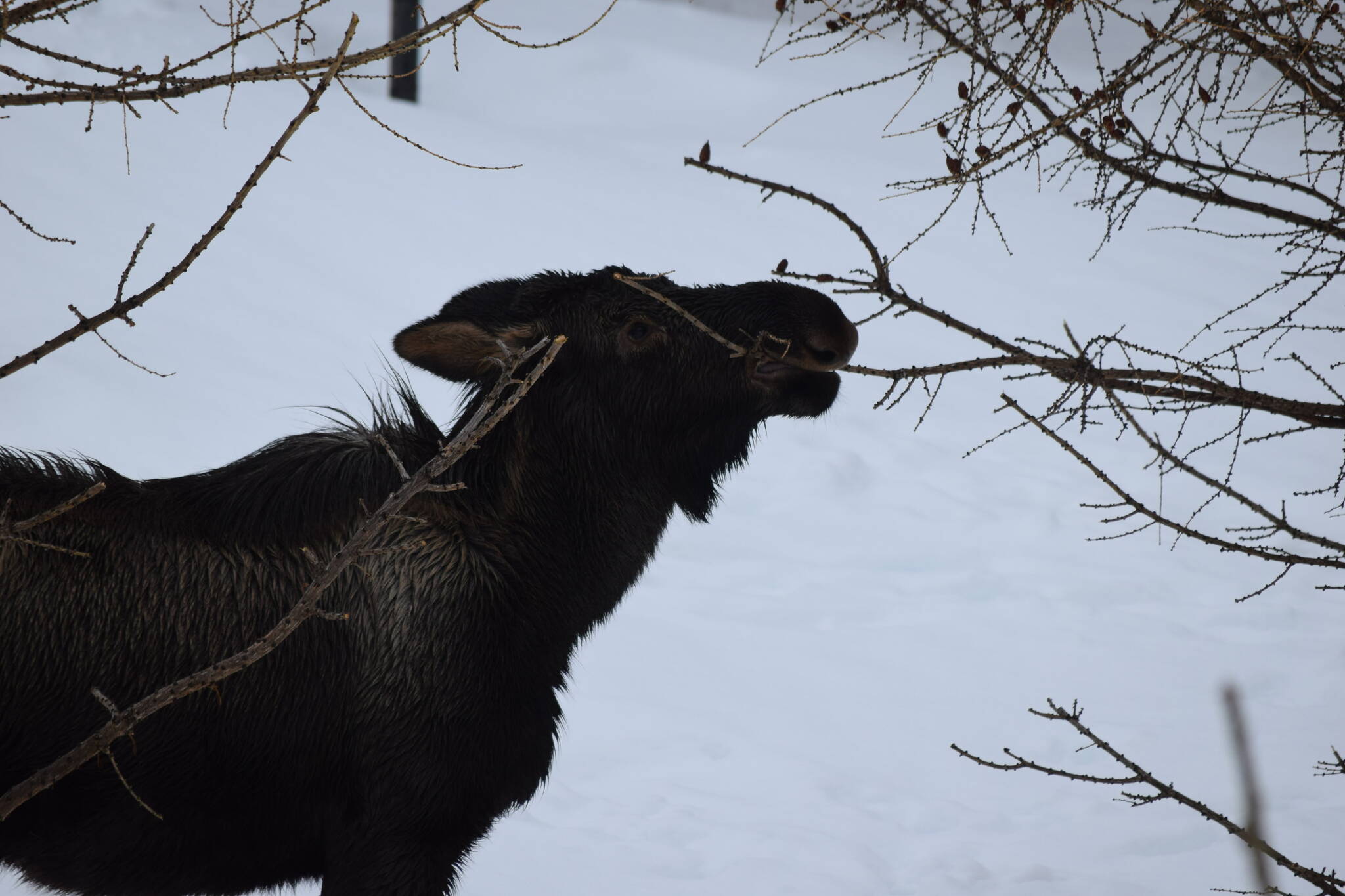With spring right around the corner, the state Department of Fish and Game is reminding people to give moose space as they come out of the woodwork.
Jacob Pelham, a wildlife biologist for the department, said Friday that it’s important to leave the animals alone as much as possible.
“The more we actually interfere or put our hands on them, their (chance of) survival goes down,” he said. “Take pictures, take videos, see them and love them from afar, but don’t intervene.”
Pelham said especially after the rough winter peninsula moose have endured this year, and with many females nearing the end of their pregnancies, the animals might be extra angsty.
“We are kind of at the point where they are cold, hungry and cranky,” he said.
In the spring, the department gets the most calls about run-ins with moose. Pelham said moose also want to take the path of least resistance, which can lead them to areas people frequent.
“When you have more harsh years like this, we tend to get more situations where the moose are coming in contact with people, whether it be just walking down the trail and the moose don’t want to get off the trail just like you don’t either,” he said.
There are ways to avoid potentially hazardous situations with the animals, however.
Pelham said one of the most basic and important rules to abide by is to never feed the moose. The animals, known as browsers, feed on bushes, small shrubs and trees primarily. One of the most nutritious meals for moose are the buds from birch and willow trees.
“As soon as we start feeding moose artificial foods or getting them accustomed to people, that’s when things go wrong,” Pelham said.
In the rare instance a calf is orphaned, the department will contact an organization to rescue the little one and feed it electrolytes or a formula milk substitute, he said. Some rescued orphans spend their time at the Alaska Wildlife Conservation Center, for example.
Another frequent question Pelham gets is what to do if a moose can’t exit a roadway or driveway because the snow berms are too high. The answer: Try to clear a path for them to exit on packed-down ground.
“Especially people with property, I try to encourage them, if you have a snowmachine, put in some snow machine tracks through the woods,” Pelham said. “The moose will find that really easy to walk on.”
During calving season, which is coming up in May, he again reiterated the importance of leaving the moms and new babies alone.
Some may even give birth in residential neighborhoods, which can cause conflict if people approach the animals. Last spring, a woman was trampled by a cow moose in Nikiski after getting too close to a newborn calf on her property, according to Peninsula Clarion reporting.
“They can be pretty grumpy, whether it be the cows that are defending their calves or the moose that are just trying to hang on until the snow goes away,” Pelham said.
He also wanted to remind folks to call the Alaska State Troopers or Alaska Wildlife Troopers any time a moose is hit with a vehicle, whether it survives or not. The Soldotna number is 907-262-4453, and the Seward number is 907-224-3346.
Reach reporter Camille Botello at camille.botello@peninsulaclarion.com.

